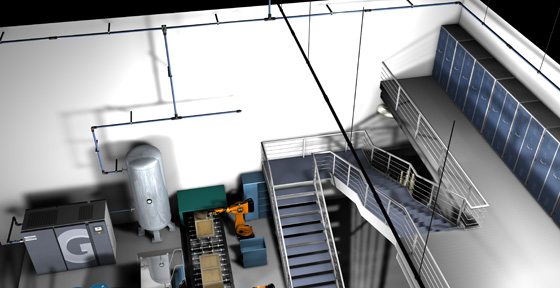Which topics were the top priorities for our readers in 2015? Take a look at our top five most read articles of the past year:
Inefficient compressed air distribution systems result in higher energy bills, lower productivity and poor air tool performance. Piping systems more than five years old have been shown to exhibit leaks of up to 25 percent, yet many facilities are slow to upgrade equipment to the latest technology. Additionally, undersized or oversized piping, poorly configured systems or clogged filters can create significant artificial demand. How do you know if your compressed air distribution network is efficient?
In some parts of the country, April showers bring May flowers and a heavy dose of humidity that tends to hang around well into the early days of fall. With temperatures and humidity on the rise, your compressed air system will experience additional water loading on the air treatment equipment. It’s important to note, at peak warm weather compressor operating conditions, there can be 650 percent more water in the air versus the highest temperatures in cold weather conditions.
A centrifugal compressor is a type of dynamic compressor, or turbocompressor, with a radial design. Unlike displacement compressors that work at a constant flow, dynamic compressors work at a constant pressure and the performance is affected by external conditions such as changes in inlet temperatures. So, how does a centrifugal compressor work?
Compressors generate heat; this heat must be removed to make sure the temperature in the compressor room is at an acceptable level. Therefore, proper ventilation is important when designing an efficient compressor room.
Food preservation has come a long way from the days of smoking, salting, curing and canning. Today, nitrogen gas is a critical element in many industries, from chemical manufacturing and electronics to laser cutting and food preservation and packaging. As an essential part of modified atmospheres– the combination of gases inside food packaging that helps prolong shelf life – nitrogen gas helps keep food costs down while ensuring more people have access to fresh food.
Every week, The 5th Utility discusses compressed air maintenance and energy saving tips, new technologies and customer success stories to help our readers operate the most efficient and productive compressed air systems in the industry. To keep up with the latest, subscribe to The 5th Utility and receive a newsletter recap of the week’s posts every Friday morning.
Source: Compressed Air Blog


